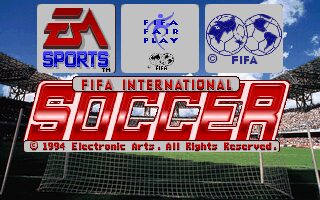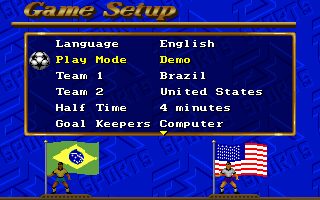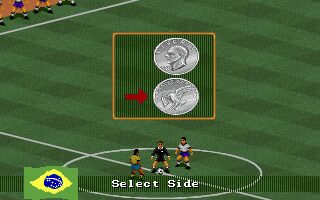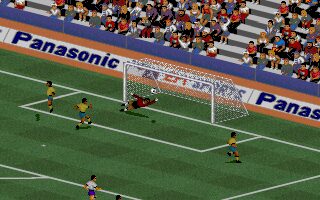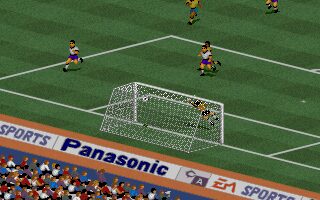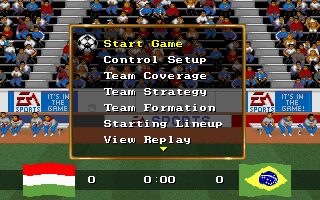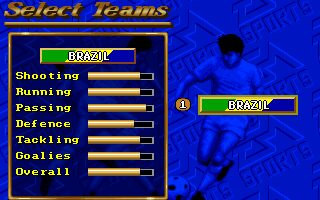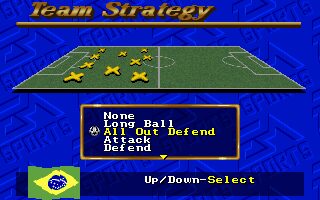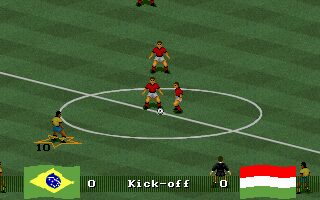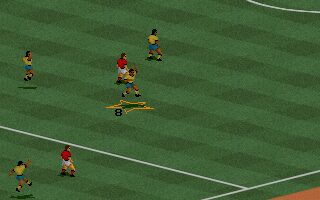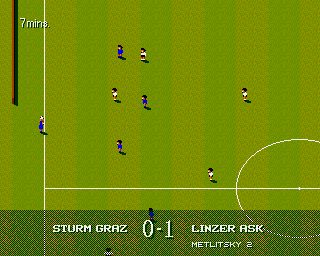FIFA International Soccer is a soccer/football sim released by Electronic Arts in 1993 for the Sega Mega Drive.
It marked the beginning of one of the longest-running and most profitable sports game franchises in history. Developed by Extended Play Productions, the game debuted on the Mega Drive and immediately stood out for its isometric viewpoint, smooth animation, and a more TV-style presentation compared to other soccer games of the time.
The original Mega Drive version was notable for several reasons. Unlike earlier titles like Sensible Soccer or Kick Off, FIFA used an angled, isometric perspective that brought the action closer to the look of a real televised match. Player animations were surprisingly fluid for the time, with detailed movement and many animation frames. Stadiums had some visual variety, and despite lacking official licenses for teams or players, the game compensated with a clean, immersive presentation and accessible gameplay. Matches were fast-paced, and although the control system wasn’t perfect, it allowed for a decent variety of actions including passing, shooting, crossing, and tackling.
In 1994, the game was ported to MS-DOS and Amiga. These conversions aimed to replicate the console experience, with mixed results. The MS-DOS version was quite faithful in terms of visuals, using VGA graphics and supporting popular sound cards of the era. However, it was hardware-demanding, and not every PC could handle the frame rate smoothly. Keyboard or one-button joystick controls also felt clumsier compared to the Sega gamepad.
The Amiga version had some technical limitations. While it looked good — featuring 32-color graphics and similar visuals to the Mega Drive — it suffered from frequent slowdowns, especially on standard machines like the Amiga 500. Load times were long and the sound effects were less crisp. Still, it was a respectable conversion.
FIFA International Soccer wasn’t flawless: the AI was basic, the foul system could be annoying, and it lacked deep tactical options. Yet it became a massive commercial success and laid the foundation for a franchise that would come to dominate the football genre. It was followed by FIFA Soccer 95, FIFA Soccer 96 and many others.
With this first FIFA title, Electronic Arts proved that digital sports could become global entertainment, establishing a yearly series that would deeply influence the sports gaming industry for decades to come.

